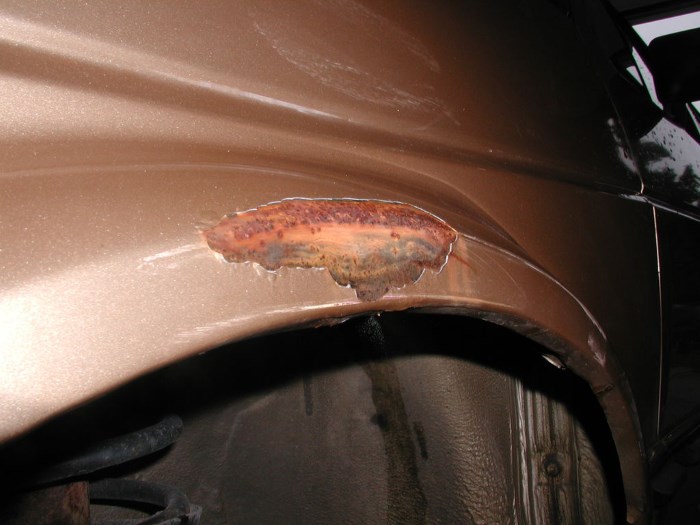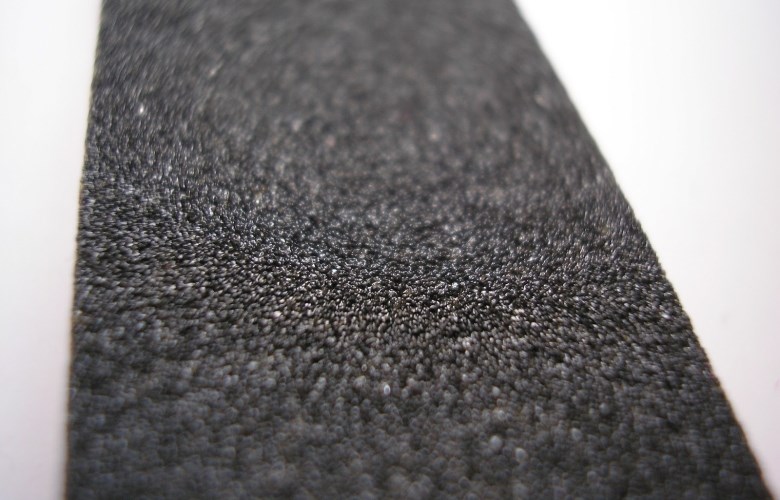The body is considered the most vulnerable part of the car, and many motorists sooner or later wonder how to remove rust from the car. To process traces of damage on the body, you must first understand their varieties. It is also useful to consider in detail the tools and popular means for removing rust on a car body. In addition to removing rust on a car body, you should also know how to protect the metal from further exposure to a harmful destructive environment.
Causes of rust
Several factors can be identified:
- Weak protection from external influences. Some manufacturers, and VAZ in particular, do not pay much attention to additional processing of the most vulnerable metal surfaces. The same applies to cars that have been in operation for several years. Neglecting protection against metal damage, motorists are often faced with a situation where simply treating rust is no longer enough. All this leads to the fact that it is necessary to fight corrosion, resorting to more serious costs and labor-intensive work.
- Minor damage, scratches and other defects are the first culprits that the body begins to corrode corrosion. If you do not get rid of such shortcomings of the body in a timely manner, then later it will be possible to rely solely on the overhaul of the car.
- Rain, snow, ice, dirt, chemicals that process the road surface, etc. All this, one way or another, negatively affects the body. As you can see, the car body has a lot of vulnerabilities. And in order to save and protect the metal from complete destruction, it is necessary to deal with corrosion centers in a timely manner.
Types of rust damage
Corrosion manifests itself in different ways, and depending on this, an appropriate method is selected that will help get rid of its destructive effects. It is conditionally possible to distinguish the following types of body lesions:
Small spot of rust on the surface of the body. Such a defeat is the simplest, and if it is not started, then the body can be easily saved and protected from further destruction. In this case, a simple cleaning of the area of \u200b\u200bthe car body from rust and applying a protective layer of primer will help.

Multiple rust spots are one of the most dangerous types of corrosion, which indicates that a large area of the body is affected. Sooner or later, such a symptom will turn into decay, and through corrosion will form in this place. Corrosion inside the paintwork manifests itself in the form of small blisters of paint without noticeable traces of rust. Such swollen points characterize corrosion that develops under a layer of paint and varnish.
Open type lesions are characterized by the fact that rusted metal patches are visible on the surface of the body, which gradually peel off. this is a serious type of lesion, which, in a state of disrepair, may require a major body repair, when it is already impossible to simply cover it with putty.
Through corrosion is the most terrible type of destruction, in which rust gradually eats away the metal, leaving behind unrecoverable areas that can only be replaced. Depending on the type of damage, certain measures are taken to restore the damaged area. First you need to understand the tools and materials that are necessary for this type of work.
Corrosion Control Tools
A set of equipment for the treatment of affected areas includes the following items:
- Sander. This is the most important tool, without which metal cleaning will be long and tedious. To free the affected area from traces of corrosion in garage conditions, an expensive professional machine is not necessary. It will be enough to buy an ordinary household grinder of small sizes.
- Tools for manual stripping. This includes a metal brush and tools for fixing sandpaper. Manual cleaning is inevitable in those places where it will be difficult to stick a grinder.
- Nozzles for grinders. These can be cup-type brushes with bristles of varying stiffness. You may also need circles on which sandpaper is attached. Cleaning with these nozzles will be much faster and with less effort.

In addition to a set of tools, you need to prepare the following consumables that will help get rid of corrosion:
- Rust converter. A tool that is popular today, with which you can cover up the affected area and localize corrosion. The converter is made by manufacturers based on an acid that reacts with rust, neutralizing its spread. Such a composition can be prepared independently at home, for which distilled water is mixed in equal proportions with citric acid, and a little baking soda is added to the composition. Treatment with such a remedy will not be as effective as a purchased remedy, however, with weak lesions, its use will be quite appropriate.
- Degreasers will be needed in order to get rid of plaque before applying a protective layer.
- Automotive putty is needed to repair dents and other defects by leveling the surface.
- An anti-corrosion primer will be needed to treat the area before applying the paintwork.
Rust removal sequence
Treatment of the damaged area is to remove rust to bare metal. To do this, using a grinding machine, you need to completely get rid of traces of corrosion. This should be done with care in order to minimize the removal of live metal. It is worth noting that corrosion on the body number, if it occurs, can only be cleaned by hand so as not to permanently damage it.
If the corrosion is penetrating, the defects must be repaired with fiberglass putty. Severely damaged points on the car body may need to be repaired with a metal patch of the appropriate thickness. Through corrosion can also be sealed with reinforcing mesh and putty.
If the rust has not eaten the body much, then the treatment comes down to light stripping to metal and leveling the surface with ordinary putty. In the event that the corrosion points do not have large depressions after cleaning, they can simply be primed and prepared for painting.
Another way to stop the corrosion of a VAZ car or another model is to treat it with a converter. This should only be done if the rust has not severely damaged the metal. To do this, corrosion points are treated with the agent and left until the reaction is completed. Further protection of the metal will be to stop decay. The converter partially stops the effect of corrosion, but should not be relied upon too much.
Corrosion Prevention
Corrosion protection is just as important as corrosion removal and should be done regularly. The applied protective coating is constantly exposed to aggressive environmental influences, therefore it requires constant updating.
Before processing, you should examine the points on the body of a VAZ or other specific model that are most vulnerable to corrosion. Their protection must be ensured in the first place. So, the most vulnerable points on any body are:
- wheel arches;
- thresholds;
- bottom;
- cavities inside doors.
The protection of these areas is slightly different from each other. For example, the bottom is processed by one, but the doors and thresholds are processed by another. To stop the harmful effects of moisture, it is necessary to create a protective film not only on the specified body parts. Very useful and justified in terms of cost is the treatment of paintwork with wax polishes, which create a protective film on the surface. Regular polishing can not only prevent corrosion, but gives the car an attractive appearance.







